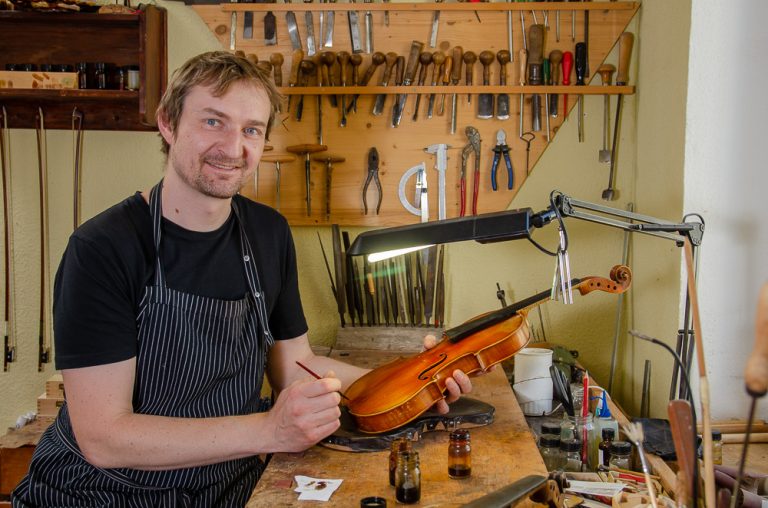In my workshop all repairs and overhauls can be carried out for stringed instruments of all sizes, from violin to violas and cellos to double basses.
Whether it is accident damage such as broken neck, cracks in the floor or ceiling, broken bridge, damage to the paintwork, chipped corners, etc., or if age-related and play-related overhauls are required, such as gluing, reworking the fingerboard, setting a new voice or cutting a new bridge (…).
When it comes to repairs of the instruments, I strive to meet the respective requirements of my customers and to assist you with advice and action.
Things worth knowing for beginners:
playability of string instruments
I would like to draw special attention to the playability, to the setting up of stringed instruments (violin, viola, cello, double bass).
An instrument that does not meet ergonomic requirements, with other words, that is not fully adapted to the human anatomy, will cause the violinist unnecessary difficulties. So it is particularly important for beginners to practise on a suitable well-equipped instrument, because initially they cannot even know what requirements the violin can have and what demands the violin has on the violinist!
It happens all too often that by saving money and with the pretext “it´s just for a beginner” only a tolerably playable instrument is bought for the potential “Paganini”, who then of course quickly begins to doubt his talent and might end his career too soon.
Discipline is a good intent, but should go along with performing on a suitable instrument, so the music will be easier to play!
Therefore, one should consider whether the best decision is to have only the bare essentials or a really well-established instrument.
In direct consultation with you, I strive to find the right measure in order to meet the most diverse requirements, ideas and of course the budget of my customers. This primarily relates to the kind of treatment that should be carried out on your instrument. All sorts of work can be discussed with the customer, such as polishing shellac, grooving the fingerboard, height and curvature of the bridge (string position), fitting the voice and work on the upper or lower saddle. With many “cheap” purchased instruments, it is often advisable to invest more, because they require a more complex overhaul, depending on the quality of the manufacturer and the wood.
The greater the effort with which I set up an instrument (the violin maker says “finish”), the more the playability is guaranteed.

